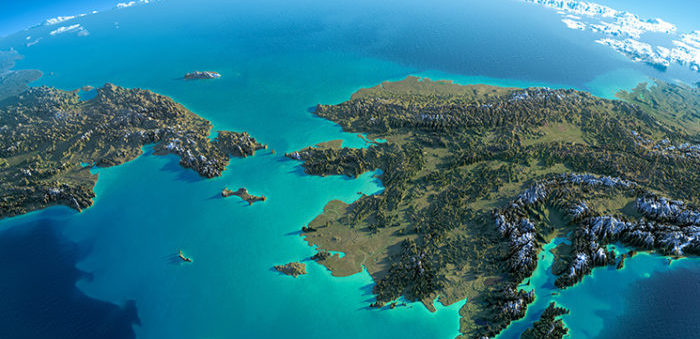The Bering Strait is the only marine connection between the Chukchi Sea and Arctic Ocean to the north and the Bering Sea and Pacific Ocean to the south. Just 55 miles wide, the Strait separates Alaska to the west and Russia to the east.
The Bering Strait is a biological hotspot. Millions of seabirds and hundreds of thousands of marine mammals use the Strait as a migratory corridor, and the Bering and Chukchi Seas are one of the most productive ocean ecosystems in the world.
It is also noted that vessel traffic through the Bering Strait is growing. Earlier this year, an American company revealed plans to sail a luxury cruise ship from Seward, Alaska to New York City in 2016, using the fabled Northwest Passage. More recently, a Canadian company announced its intent to ship a cargo of nickel concentrate from northern Canada to China, also via the Northwest Passage. In addition to increasing interest in using the Northwest Passage north of Canada, traffic on the Northern Sea Route north of Russia is growing.
As vessel traffic increases, so too does the potential for adverse environmental impacts to the Bering Strait region. These impacts could include more pollution, ship strikes on marine mammals, and oil spills, among others. Growth in vessel traffic could also have adverse effects on the indigenous peoples; ship traffic could swamp their small boats, displace the animals they hunt, or cause waves that disturb archeological sites and culturally important places.
Fortunately, there are solutions that can make shipping safer and reduce the chances of accidents and spills in the Bering Strait region. A new article in the journal Marine Policy outlines some of these solutions.
| Outlined solutions |
|
Establishment of shipping lanes: Shipping lanes or recommended routes serve to confine vessels to particular pathways in some portions of the ocean. Use of shipping lanes can help to create regular patterns of use and ensure that vessels steer clear of potential marine hazards. Designation of “Areas to be Avoided”: As the name implies, “Areas to be Avoided” are used to help ensure that vessels stay away from areas of the ocean that may be especially dangerous or vulnerable to disturbance. “Precautionary Areas” can also be used to alert mariners to areas that require special caution. Imposition of speed restrictions: In some situations, slowing down can reduce the risk of ship strikes and decrease noise that may adversely affect marine mammals, especially in constricted areas. Bolstering communications and monitoring: Establishment of routine reporting requirements for vessels transiting the Bering Strait could help keep both local communities and search and rescue officials aware of activity in the region. Use of Automatic Identification Systems (AIS) could facilitate communication and monitoring, helping to prevent accidents and ensure compliance with regulations. |
Other potential safety measures include improved charting for Arctic waters (many of which have not been charted to modern standards); more rigorous voyage planning; and pre-placement of equipment and rescue tugs that would enable quicker response to accidents.
These safety measures may be put in place in a variety of ways, ranging from voluntary adoption by industry, creation of regulations by U.S. agencies including the Coast Guard, or through international agreements between nations or under the auspices of the International Maritime Organization.
There is no “silver bullet” that can eliminate the threats posed by growing vessel traffic in the Bering Strait, but if sensible regulations and mitigation measures are put in place now, they will go a long way toward increasing shipping safety and reducing potential environmental impacts.
Source: Ocean Concervancy
In the start, I was outspoken with you propecia before and after has changed my life. It has become much more fun, and now I have to run. Just as it is improbable to sit.




























































